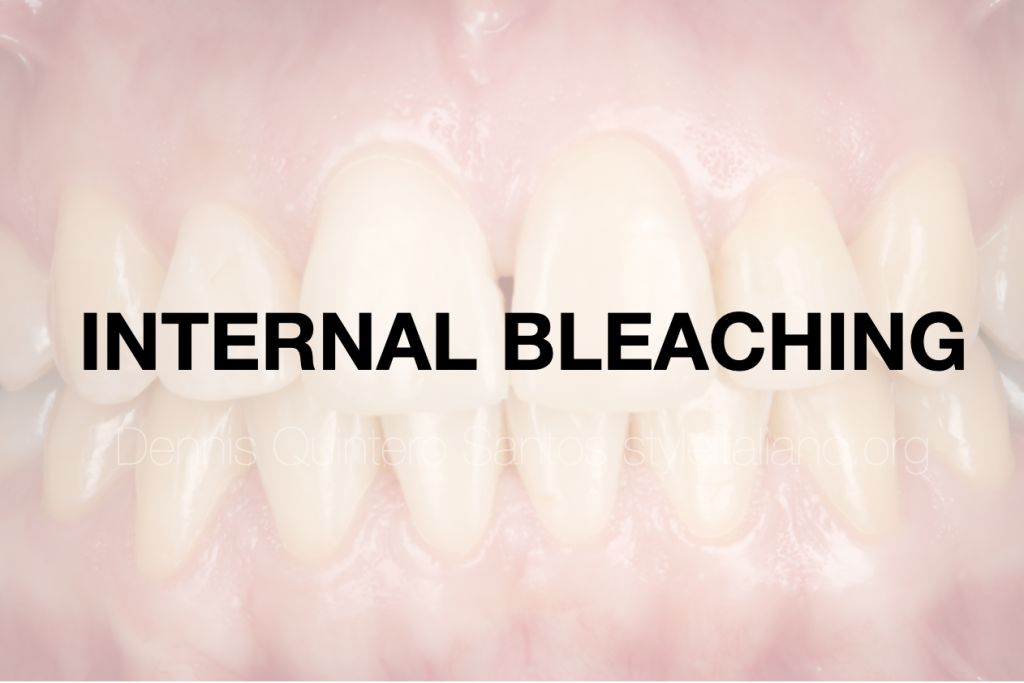
The use of internal bleaching in a non-vital tooth as a conservative approach
13/09/2020
Dennis Quintero Santos
Warning: Undefined variable $post in /var/www/vhosts/styleitaliano-endodontics.org/endodontics.styleitaliano.org/wp-content/plugins/oxygen/component-framework/components/classes/code-block.class.php(133) : eval()'d code on line 2
Warning: Attempt to read property "ID" on null in /var/www/vhosts/styleitaliano-endodontics.org/endodontics.styleitaliano.org/wp-content/plugins/oxygen/component-framework/components/classes/code-block.class.php(133) : eval()'d code on line 2
The aim of internal bleaching is to recover or improve the natural color of the teeth in a conservative management, avoiding (when possible) to make a crown preparation in dark non-vital teeth needing color improvements.
Tooth discoloration varies in etiology, appearance, localization, severity and adhesion to tooth structure. It can be defined as being extrinsic or intrinsic on the basis of localization and etiology.
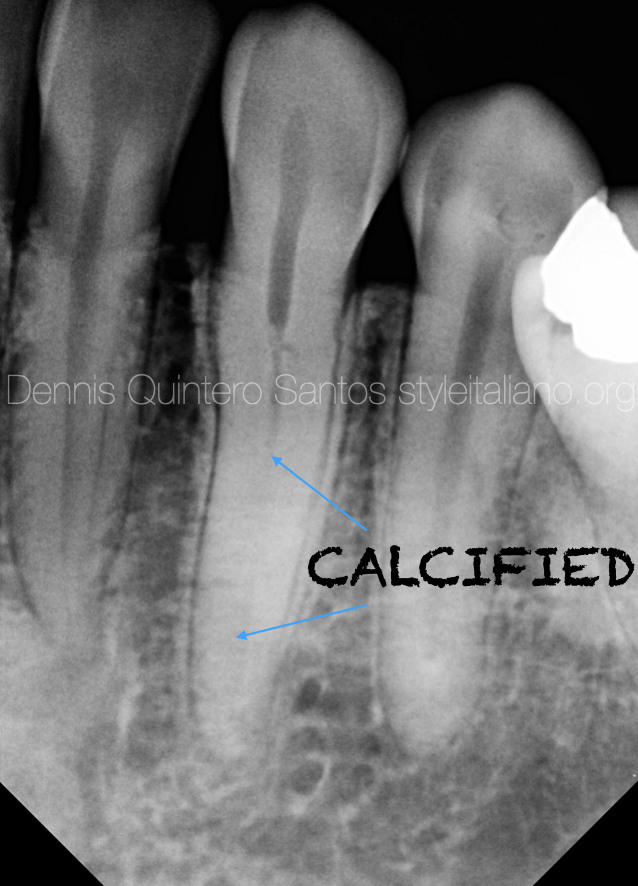
Fig. 1
Female 35 years old
This patient was referred to me, due to the discoloration of the tooth 3.3
Diagnosis was necrotic pulp do to trauma in the past.
Calcification in the middle third of the root.
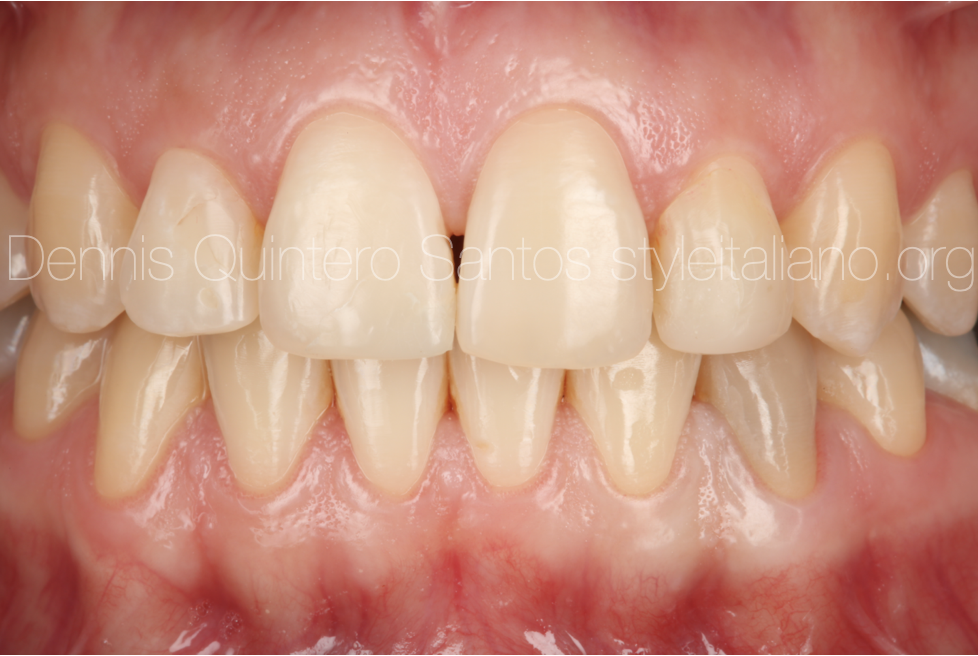
Fig. 2
Initial clinical situation
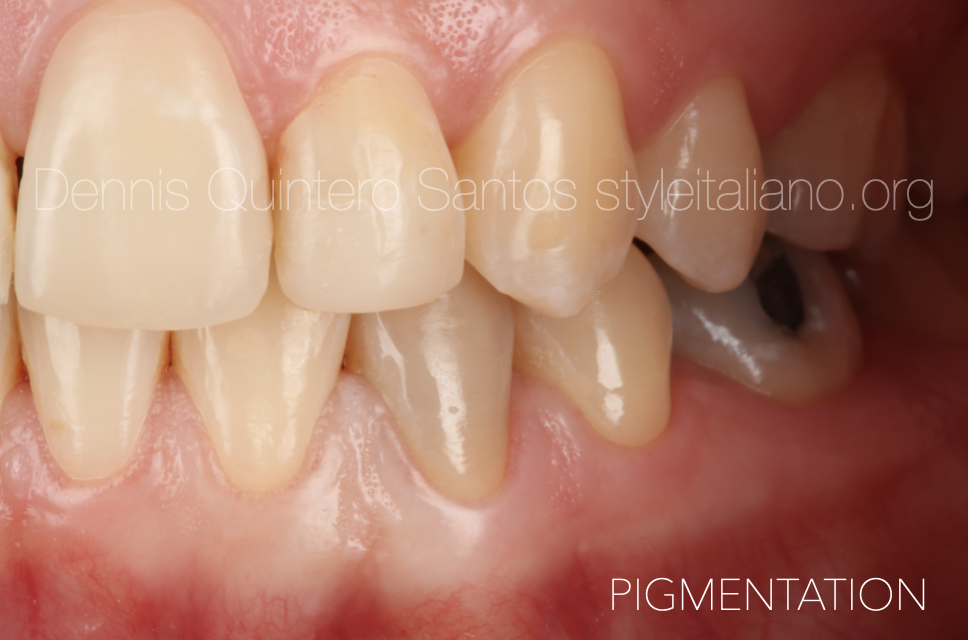
Fig. 3
Patient wants to improve the color on tooth 3.3 after the endo-treatment
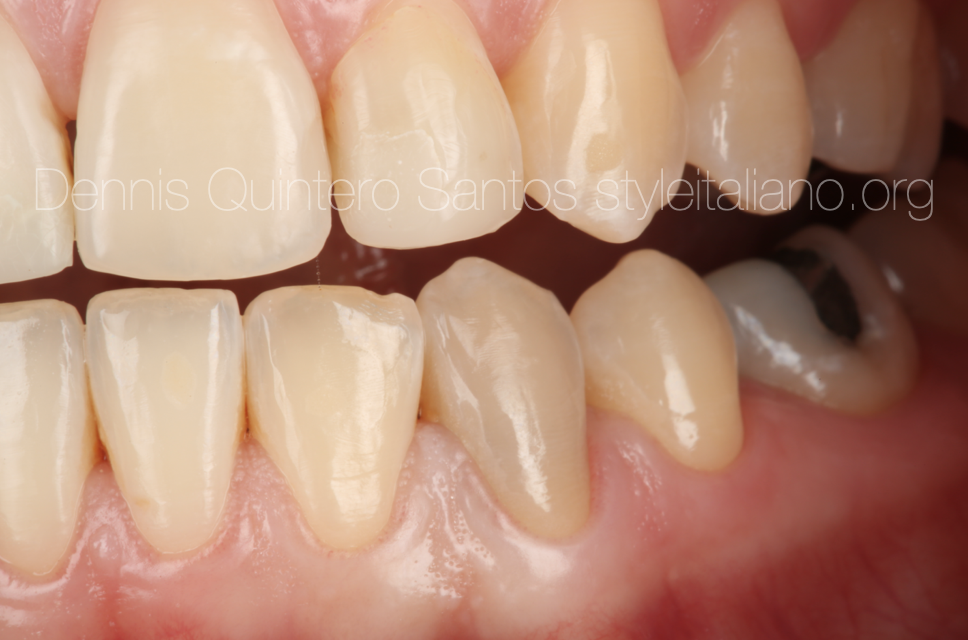
Fig. 4
Discoloration of tooth 3.3

Fig. 5
A3 color on tooth 4.3

Fig. 6
Dark color on tooth 3.3
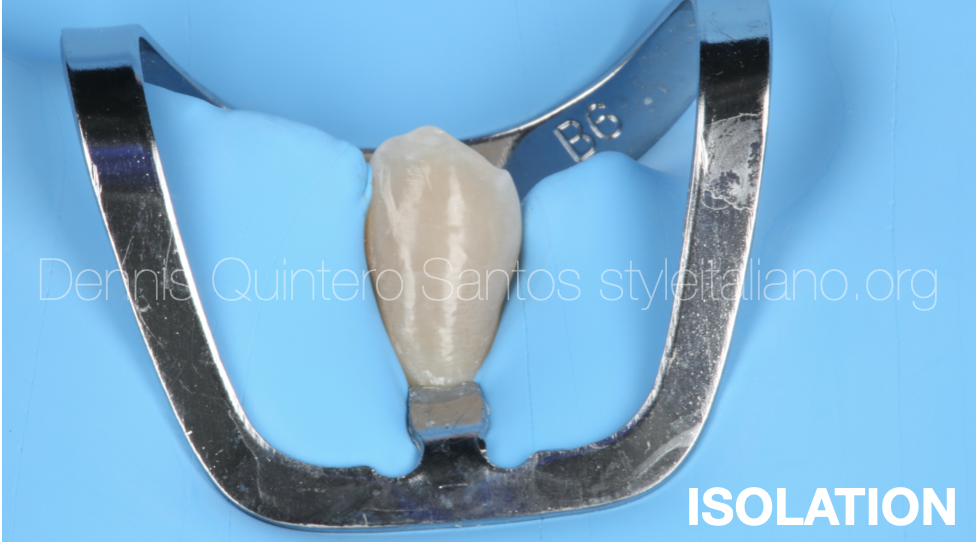
Fig. 7
Isolation with the rubber dam and B6 clamp is perform for the endo-treatment
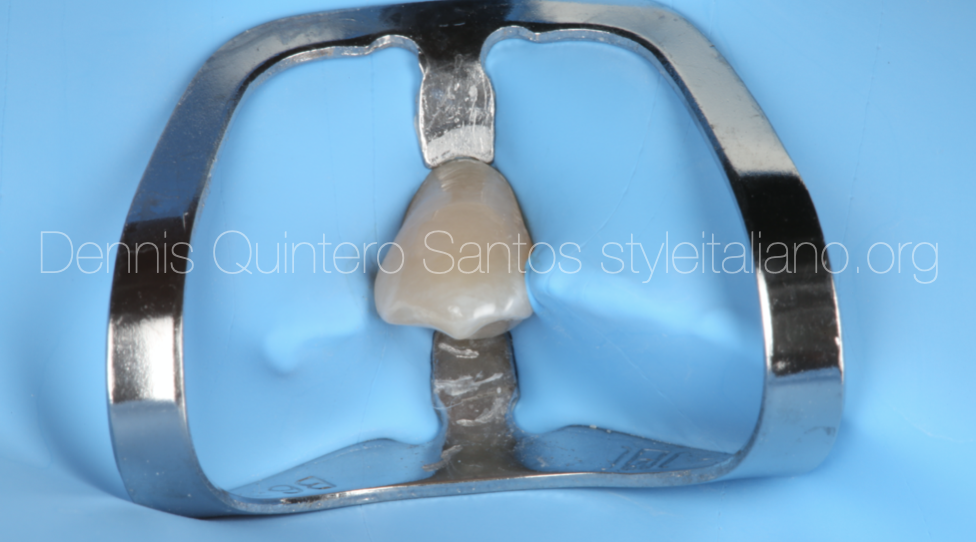
Fig. 8
Correct clamp position to avoid damaging the soft tissue.
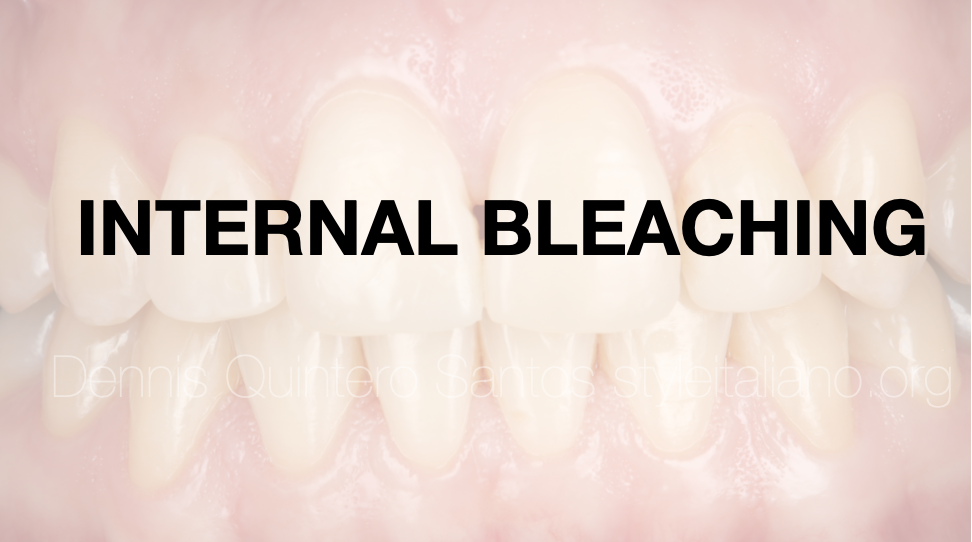
Fig. 9
After the endo-treatment, internal bleaching is the next step.
In the literature several options in materials for internal bleaching are reported:
-30% sodium perborate.
-35% hydrogen peroxide.
-5%-10%-16% carbamide peroxide
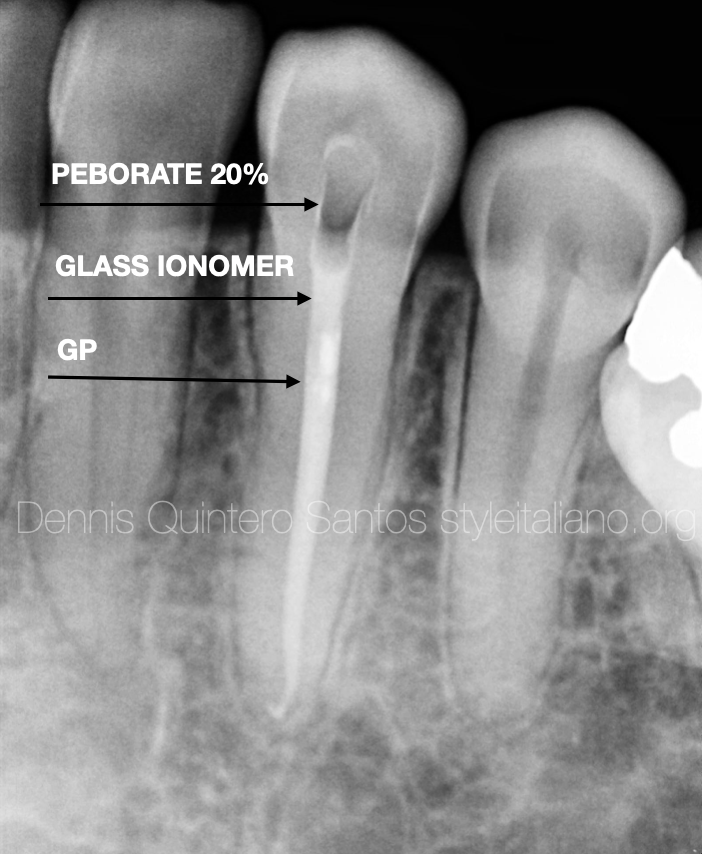
Fig. 10
After the endodontic treatment, it is very important to block out the gutta-percha and the cervical area with a glass ionomer to avoid any external resorption.
In this case, 20% perborate was placed for 5 days.
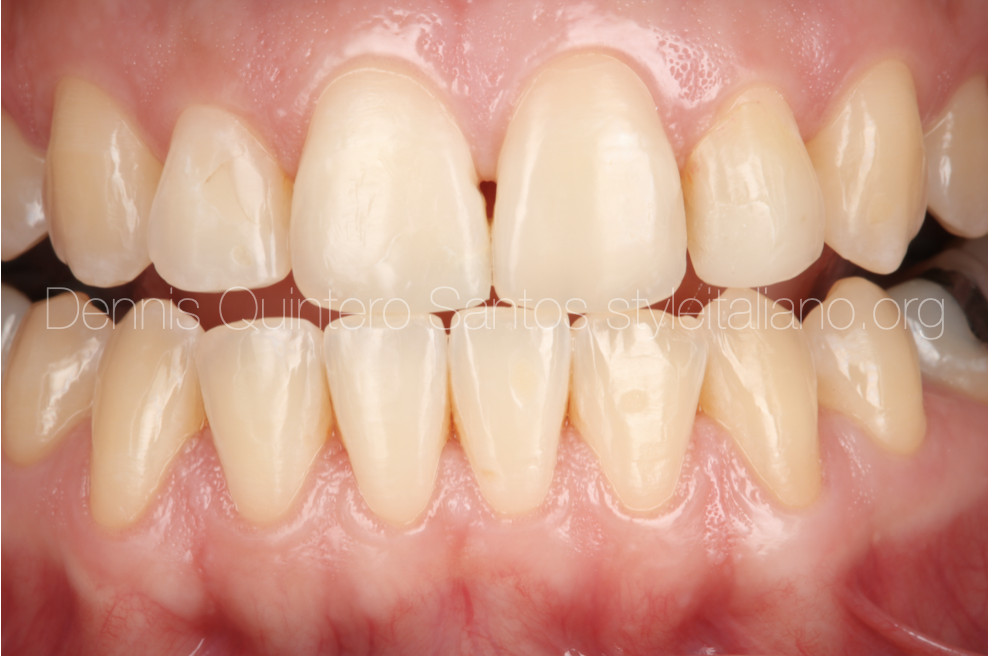
Fig. 11
After 5 days, with only one application, the tooth color improved, becoming A3.
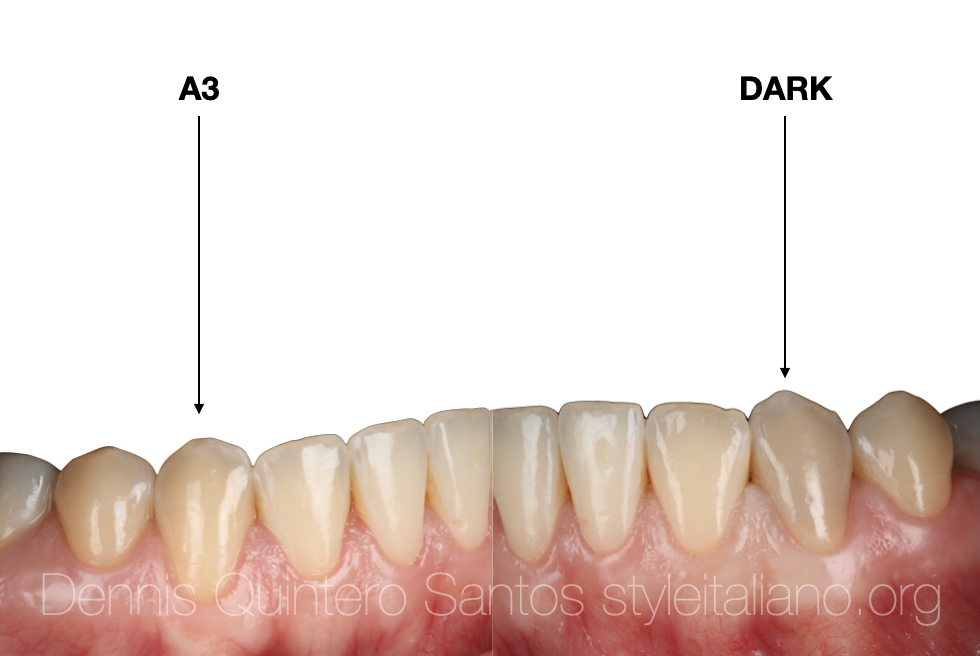
Fig. 12
Before initial treatment
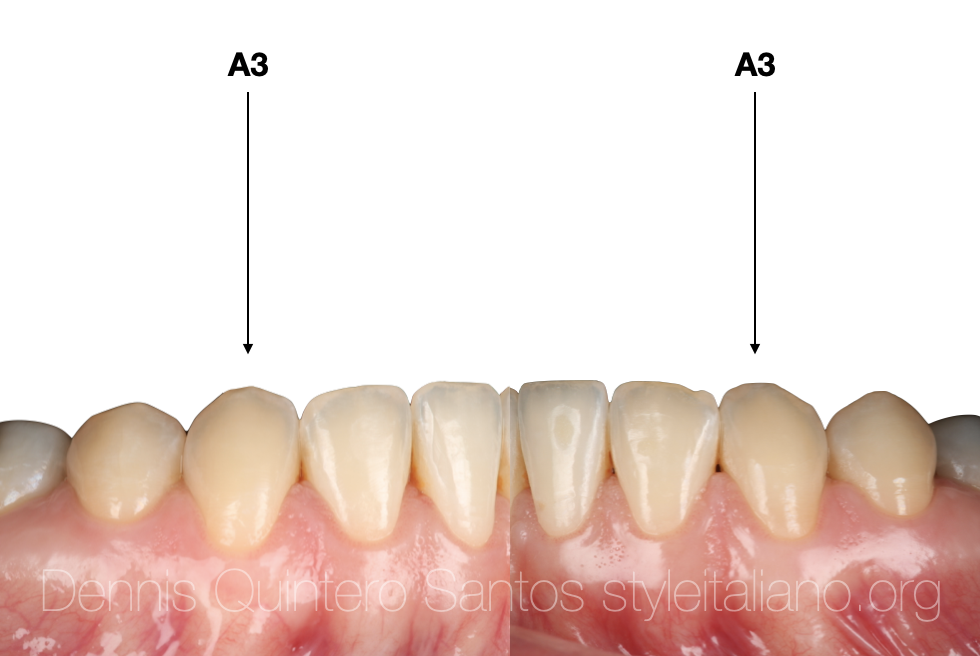
Fig. 13
After

Fig. 14
Final result of the Endo-treatment.
2 years follow up.
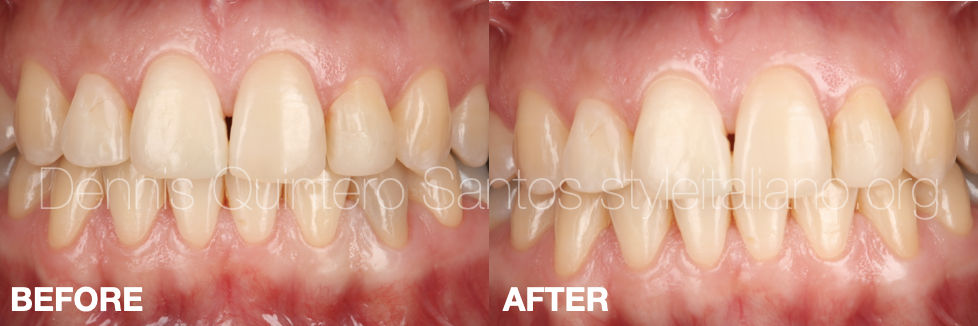
Fig. 15
Final result with 2 years follow up
Conclusions
Internal bleaching in nonvital teeth is a good alternative to improve tooth discoloration. With this simple approach we can be conservative, saving the natural tooth structure.
Also the diagnosis is very important, and is important to use the correct treatment plan and materiales to avoid any type of complications as external resorption.
Bibliography
Truman J. Bleaching of non-vital discoloured anterior teeth. Dent Times 1864;1:69 –72.
Plotino G, Buono L, Grande NM, Pameijer CH, Somma F. Nonvital tooth bleaching: a review of the literature and clinical procedures. J Endod. 2008;34(4):394-407.
Marin PD, Bartold PM, Heithersay GS. Tooth discoloration by blood: an in vitro histochemical study. Endod Dent Traumatol 1997; 13: 132-138.

